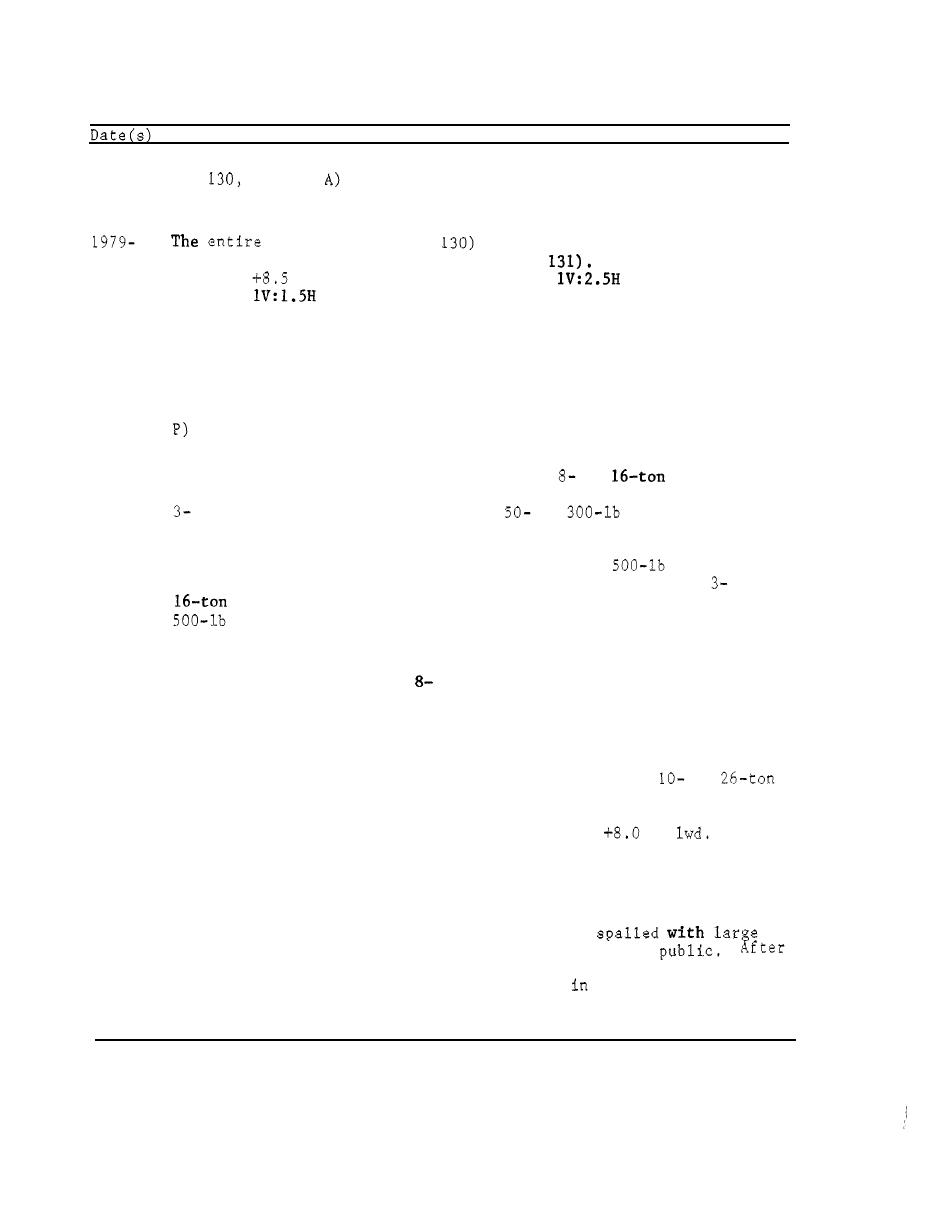
Table 48 (Concluded)
Construction and Rehabilitation History
Stone was placed along the lakeward end of the north breakwater (Fig-
1975
Section
in areas of settlement and along the lakeward
against wave and ice action.
north pier (Figure
was removed, and the structure was
1980
The crest el of the
pier was
ft lwd, and side slopes were
on the channel
side and
on the lakeside. Approximately 1,000 tons of stone
was placed along the navigation light at the head of the north break-
water. Riprap stone also was placed along the south breakwater head.
1981
Approximately 510 tons of riprap stone was again placed at the head
of the north breakwater around the navigation light (Figure 130).
Riprap a l s o was again placed around the head of the south breakwater.
was replenished, and the structure was recapped with concrete.
1982
The stone at the head of the west breakwater (Figure 130) again was
to
riprap stone
washed out, and approximately 1020 tons of
was placed around the navigation light. Also added were 50 tons of
to 10-in. fill stone, 247 tons of
to
core stone, and
312 tons of 500-lb to 3-ton riprap to the north breakwater (Fig-
(Section C) included the addition of 324 tons of
to 3-ton rip-
rap as core stone along the lakeside face and 1,038 tons of
to
riprap around the breakwater head. In addition, 800 tons of
to 3-ton riprap stone was placed as toe protection along the
channel side of the south pier.
1983
to 12-ton riprap stone was placed
of larger cover stone, and
around the navigation light at the head of the west breakwater
Major riprap placement at the south breakwater (Figure 130, Sec-
1984
tions C, D, and E for protection against waves and ice action was
)
completed which involved approximately 86,770 tons of
to
cover stone (with stones as large as 49 tons in some areas). This
placement encompassed the south breakwater head and both the lake and
harbor sides. The stone was placed to an el of
ft
1986
Reconstruction of the head of the north breakwater was initiated and
and the placement of a steel sheetpiling with a concrete cap break-
water head structure. Also initiated was rehabilitation of the south
breakwater concrete caps which are extensively
pieces cracked and broken off causing a hazard to the
these repairs, the structures will be in good condition. An aerial
Figure 133.
view of Muskegon Harbor structures is shown
212




 Previous Page
Previous Page
